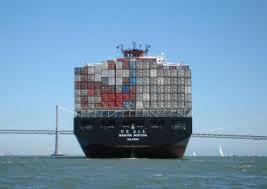
The US trade deficit narrowed more than expected in July, as imports fell and exports climbed to their highest level in almost two years, according to Commerce Department figures released today.
The deficit in international trade of goods and services narrowed by 14 percent to $42.78 billion, from $49.76 billion in June, with imports down by 2.1 percent to $196.11 billion from $200.33 billion in June. Exports rose 1.8 percent to $153.3 billion, their highest since August 2008, and up from $150.57 billion in June.
The deficit reduction was significantly larger than expected, after economists had widely predicted a deficit of around $47 billion.
US exports of capital goods rose by $2.26 billion, with booming sales of commercial aircraft accounting for more than half the gain. Sales of industrial supplies, such as fuel oil and gold, increased $502 million.
Sales of automotive vehicles and parts abroad fell $375 million, however, and exports of food, feed and beverages declined by $39 million, while consumer goods exports slipped by $8 million.
The biggest fall in imports came from consumer goods like diamonds and pharmaceuticals. Imports of autos and related parts declined $713 million.
The US trade deficit with China also declined, to $25.92 billion from $26.15 billion in June. There were increases in both imports from and exports to China, but while imports rose $393 million to $33.26 billion, exports grew by $630 million to $7.35 billion.
Crude oil imports in July decreased to $22.47 billion from $22.60 billion in June, as oil prices continued to edge lower. The cost of all types of energy related imports rose to $28.43 billion from $28.02 billion in June.
Meanwhile, a report from the Labor Department showed a fall in first-time filings for unemployment benefits, which were down by 27,000 to 451,000 last week—although these were admittedly not strictly accurate figures as nine states did not file claims data to the Labor Department because of the Labor Day holiday. California and Virginia estimated their figures and the US government estimated the other seven.













